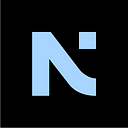Back in 2017 and 2018 when the crypto craze was at its height, the blockchain technology was tested worldwide by major banks, fintechs, supply chain firms, and other entities that started to implement it for various use cases. It was a period of trials that were meant to give the distributed ledger technology (DLT) a verdict that would either put it in a basket with successful breakthroughs like artificial intelligence (AI) and cloud or end up like Google Glass or Blackberry.
Today, it’s clear that the technology is here to stay. Moreover, it will play a major role in reshaping entire industries, starting with the financial market. The central bankers’ rush to CBDC implementation is an eloquent example. Nevertheless, it seems that blockchain is still a bit complicated and non-flexible to most enterprises, especially to small businesses and individuals. This is where NULS comes in.
NULS provides an intelligent solution that allows everyone to rapidly and safely create customized blockchains by using ready-made parts called modules. There are several ways to build your own blockchain via NULS, but the most straightforward one is by applying their user interface called ChainFactory.
What Is ChainFactory?
ChainFactory is one of NULS’ flagship products that deserve to be discussed separately. The user interface enables blockchain developers to create new chains using NULS modules that can be picked from a special depot of ready-made solutions. The new blockchains rely on NULS’ main architecture but can be enhanced at any time by automatically adding new modules.
Unlike NULS’ other solution to build new chains, called ChainBox, ChainFactory aims to make the blockchain building process as easy as possible. You don’t have to be a computer geek to build with ChainFactory, as it simplifies the approach to the point where everyone can create a new chain. You can start with a few dozen bucks paid in NULS in order to create a functional blockchain with this user interface.
- Create your blockchain with ChainFactory and pay in NULS;
- Send a “request for reimbursement” email to nulsacademy@gmail.com;
- In the email, include your NULS account used for the purchase of the new blockchain and the time (plus timezone) of the purchase.
You will get the reimbursement after a while and eventually will enjoy your blockchain for free!
With ChainFactory, users can specify the main attributes of a blockchain, such as smart contract, cross-chain compatibility, and tokenomics, including inflation and disinflation when needed. Once users make up their minds on the main parameters of their ledger, the solution is automatically building, downloading, and deploying their new customized chains.
By using this great ‘blockchain LEGO’ tool, users can easily develop the following:
- Permissioned blockchains for corporations, consortiums, and other types of organizations;
- Public blockchains for any purposes;
- Educational platforms to demonstrate the possibilities of a blockchain;
- Test platforms used by those who want to learn developing DLTs or improve their skills;
- Other purposes at users’ discretion.
As for the use cases, it entirely depends on users’ needs and creativity. The DLT may have a wide range of applications and can be used for public records, data management, payments, supply chains, trade, cybersecurity, government solutions, social networks, and many more.
Users not only get a blockchain node as a result, but they can also download the smart contract engine, web wallet and explorer. They’re ready to use for your customized solution.
What Makes ChainFactory Unique?
Blockchain technology has been around for more than a decade, but there is still no tool as great as ChainFactory when it comes to building new distributed networks without programming knowledge within minutes.
Think about this — before computers used graphical user interfaces (GUIs), they looked like giant typewriters built for distinct groups of nerds who were the only ones capable of operating them by manually typing commands. The technology was promising, but the masses couldn’t adopt such machines as the whole process of using them was really difficult. Now everyone owns a computer, laptop or smartphone that can be easily handled thanks to a nicely designed GUI. We should give credit to Xerox Alto for this, but that’s another story.
So this is what ChainFactory wants to achieve: make blockchains available to everyone by providing an easy to understand UI that encapsulates all the complex commands and features in flexible modules. No development, no coding, and no jargons that make users scratch their heads — just a few easy-to-follow steps to create a practical blockchain. That’s the beauty of ChainFactory.
How Does ChainFactory Work?
Since ChainFactory is meant to be used by the masses, it’s really intuitive, though the resulting blockchains retain the same degree of security and maneuverability.
To create a blockchain with ChainFactory, you have to register and follow a few steps. You’ll start by choosing the modules. There are two groups of modules:
- The mandatory ones, which provide you with the ledger, transactions, consensus mechanism, network communication, account, and block data;
- The optional modules, such as smart contract and public service, which allow you to make your blockchain even more functional.
The next step would be to pick a name for your blockchain project and token, create a logo and token symbol, and define the tokenomics, including supply, decimal, and inflation and disinflation.
Once you configure the genesis block and seed nodes, you can confirm your order, and you’re ready to go. That’s it! You have created your own blockchain. The final step would be to install your blockchain and enjoy it!
Then, all you have to do is install your blockchain. Enjoy!
The best way to get involved with NULS is to join in!
For more information about NULS, visit nuls.io and join the conversation on Telegram or Reddit. Make sure to follow NULS on Twitter for the latest news and updates. You can also follow us on other socials such as Facebook, Steemit and GitHub.
NULS — Nothing Makes Blockchain Easier
